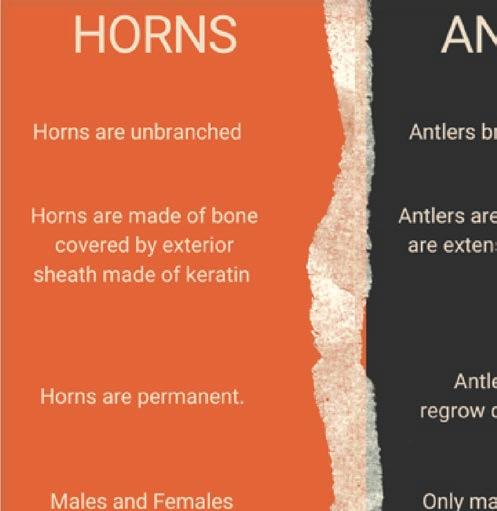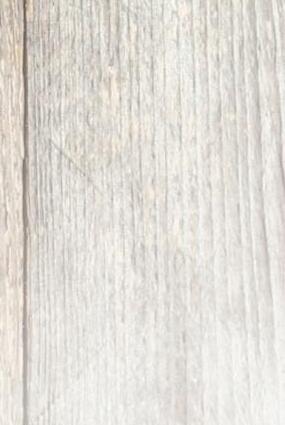
5 minute read
Know before saying ‘no’
There is an old saying, “If you don’t ask, you don’t get” or, “If you don’t ask, the answer will always be no.” Many times these are associated with salespeople who stopped short of asking their prospect for the order or fail to ask for critical information or an immediate next step. However, these sayings hold true for ere is also something else at play here when it comes to hearing the word “no,” or

For some, asking comes very naturally. We understand the consequences of not asking so we are always bold enough to speak up, knowing that fortune favors the bold. en there are others of us who have a deeply rooted fear of rejection so asking for something, anything requires us to summon our courage before breaking out into a cold sweat while meekly and nervously uttering out our question.
LINDSAY NICOLETTI Operations/ Circulation Manager lnicoletti@coloradocommunitymedia.com
ERIN ADDENBROOKE Marketing Consultant eaddenbrooke@coloradocommunitymedia.com



AUDREY BROOKS Business Manager abrooks@coloradocommunitymedia.com
ERIN FRANKS Production Manager efranks@coloradocommunitymedia.com being refused a request. Some people are so tired and burnt out that the word “no” has become their rst response to everything. Even the simplest of asks or tasks is met with resistance. e smallest requests are seen as monumental hills to climb. e thinking is that the person making such a request clearly has no idea just how much work this is going to require or how difcult it will be.
Saying “no” for some folks has become an art form, they can say “no” and still have the person who asked walk away feeling good. Others may subscribe to the philosophy of saying “no” to everything as fast as possible so others will stop asking them for anything. e rst word out of their mouth is literally always “no.”
Here’s the thing, sometimes we get so conditioned to saying “no” that it really has become our rst response instead of rst taking the time to learn more, so we know what it is that we are really saying “no” to
Columnists & Guest Commentaries
Columnist opinions are not necessarily those of the Elbert County News.

We welcome letters to the editor. Please include your full name, address and the best number to reach you by telephone.
Email letters to letters@coloradocommunitymedia.com
Deadline Wed. for the following week’s paper.
SEE NORTON, P13
Antlers or horns: Need some pointers?













Soon, all of our elk and deer will start to look like females! Only a close inspection from a super-powered camera or a peek out of the living room window will reveal whether an animal is male by the presence of pedicles, the base of growth for the antlers.
ese will initially have the appearance of round wounds on the animal’s head and will heal before the antler growth process begins again. While some animals await antler buds, the horned wildlife can continue to hold their heads high on muscled necks because their head gear will not be detaching.
Although both antlers and horns consist of bone that grows from the skull, the structure of the horn has two layers. Covering the bony part of the horn is a keratin sheath. e sheath and bone stay in place and in some species continue to grow during the life of the animal. Females also have horns but of a smaller size. Local horned wildlife include bison, bighorn sheep, and mountain goats.

Members of the deer family such as elk, mule deer and moose grow antlers which are shed annually. A male-only club, bulls and bucks use antlers for protection from predators, to portray dominant status and to impress the ladies. As it turns out, their antlers impress everyone! But males pay a price for their proud displays. Bull elk have half the lifespan of female elk due to reduced overall health resulting from the demands of antler growth.
Age, genetics, nutrition and overall health in uence the size of antlers. Size matters, but there are more important considerations for breeding. Broken or misshapen antlers can be a sign of genetic weakness, injury or serious illness. For these reasons, elk cows have more interest in antler symmetry over size. Antler ornaments like holiday decorations or hammocks? Only the elk know if such décor adds to a bull’s appeal! e antler growth cycle beings in the spring, triggered by increasing daylight and subsequent testosterone production. As they grow, antlers are covered by velvet which brings blood vessels and nerves to the underlying bone.


After the antlers have reached their full size, the velvet begins to dry. is process is called hardening o . Once the velvet dies, the animal rubs his head against trees or other surfaces. e velvet will come o in strings during which time the bull is “in tatters.” e antlers are then fully grown and ready to be brandished for mating and territorial displays.
As the hours of daylight shorten, testosterone production lessens which causes the connection between the antler and the skull to weaken. e antlers eventually break away from the pedicle after the rut season concludes.
Antler castings have a role to play besides being fashioned into furniture or cut into dog chews. Dozens of species nibble on shed antlers to gain calcium and other nutrients. Deer will occasionally eat antlers to gain the minerals they lost during the growth of their own antlers.
Find a shed antler? Be sure to check the calendar before taking it home. In 2018, the Colorado Parks and Wildlife Commission voted to protect winter habitat for wildlife by forbidding antler or horn collection found west of I-25 between Jan. 1 and April 30 each year.
When you see velvet antlers this spring, you can understand the toll it takes on bulls and bucks. Even though their antlers look soft and touchable, keep in mind that hard bone is just under the surface, a fact which elk will be happy to show you if you get too close!
I do believe in saying “no” more of the things we shouldn’t be doing so that we can say “yes” to more of the things we should or could be doing. However, not at the expense of missing an opportunity to get done what needs to get done.


If you are leading a team, you probably wouldn’t want them to stop coming to you with questions. If you are a part of a team, you also wouldn’t want to be left out of opportunities to collaborate and problem solve. And any parent certainly wouldn’t want their child to stop coming to them with questions or requests, instead, just taking actions into their own hands and dealing with the consequences later. When the “no” monster inside of us is unleashed, we invite contempt and disharmony in any relationship.
Years ago, I had a coworker named Frank. Frank would say “no” to everything at rst. But not for the reasons mentioned above or that you might be thinking. He taught me one of the greatest lessons of my life when it came to decision-making relative to both the person asking for something and the person being asked. He would say “no” if the request wasn’t supported with the “why.” Or Frank would say “no” if the person asking didn’t really understand everything involved in what they were asking for.

What Frank taught me and I hope to pass along to you is this: Before saying “no,” take the time to ask more questions and get as much detail as possible before making your decision. And before you ask for anything, know the “why” behind your request, and what it is you are really asking the other person or team to do for you. Are you saying “no” simply out of habit? Is the “no” monster hurting your relationships at home or at work? Do you understand the concept of including your “why” behind your request? I would love to hear your story at gotonorton@ gmail.com, and when we can take the time to know before we say “no,” it really will be a better than good life.

Michael Norton is an author, a personal and professional coach, consultant, trainer, encourager and motivator of individuals and businesses, working with organizations and associations across multiple industries.









